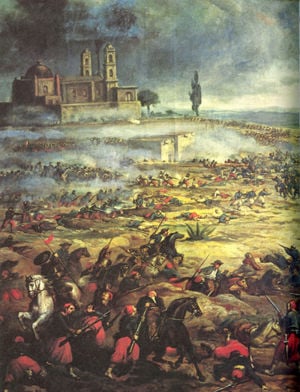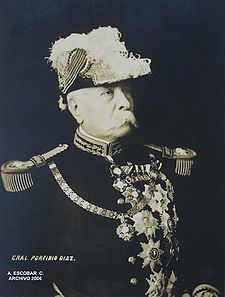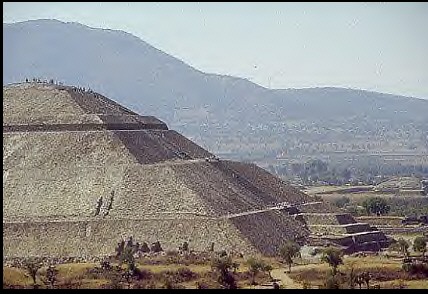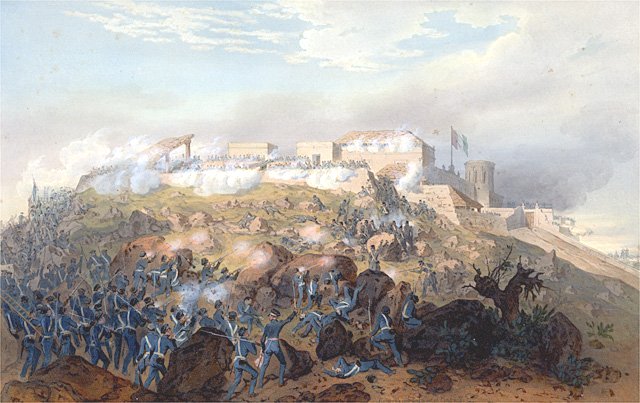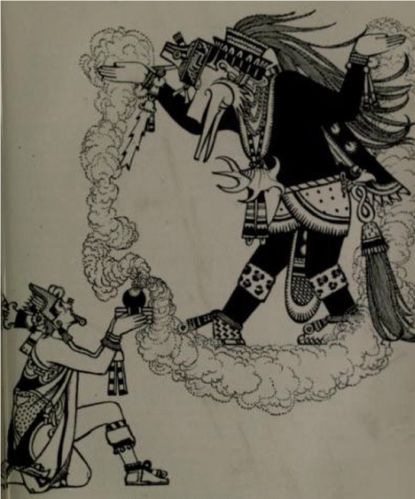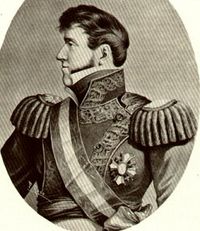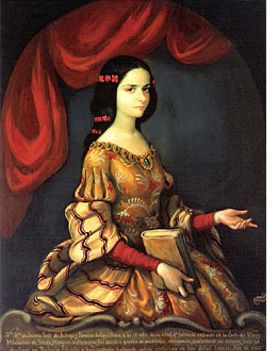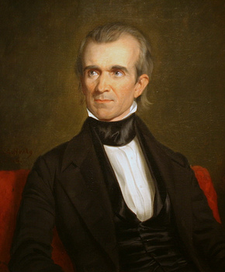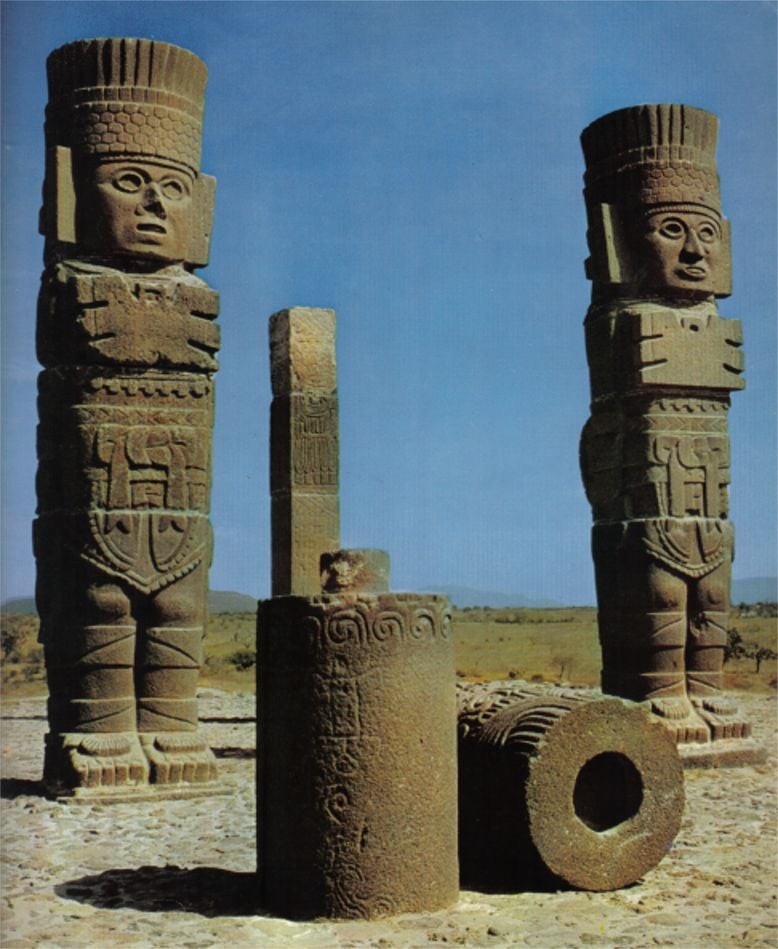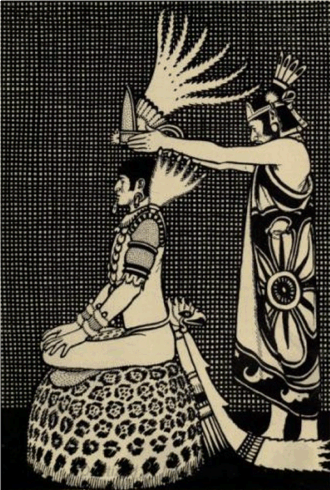Mexican History
-
This iconoclastic priest sparked the Mexican War for Independence from Spain with his Grito de Dolores ("Cry of Dolores") and is considered the Father of the Nation of Mexico
-
Miguel Hidalgo y Costilla
-
Santa Anna
-
José María Morelos
-
Ignacio Allende
-
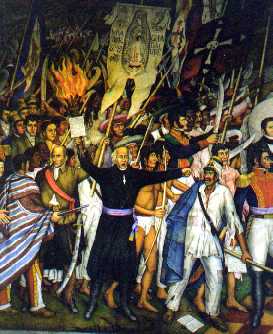
Explore key aspects of Mexican history through this engaging quiz. Covering pre-Columbian cultures like the Olmecs and Mayans, to the rise of the Aztec empire and its last emperor, Cuauht\u00e9moc. This quiz assesses knowledge on significant historical milestones and figures, enhancing understanding of Mexico's rich past.
Quiz Preview
- 2.
Cinco de Mayo is a celebration of __________ .
-
Independence from Spain.
-
Victory against the Americans at the Battle of Buena Vista in the Mexican American War.
-
Defeat of French forces at the The Battle of Puebla.
-
The end of the Mexican Revolution .
Correct Answer
A. Defeat of French forces at the The Battle of Puebla.Explanation
Cinco de Mayo is a celebration of the defeat of French forces at the Battle of Puebla. This battle took place on May 5, 1862, when a small Mexican army successfully defended the city of Puebla against a much larger French army. The victory was significant because it boosted Mexican morale and showed that the French could be defeated. Although the French eventually went on to occupy Mexico, Cinco de Mayo continues to be celebrated as a symbol of Mexican resistance and national pride.Rate this question:
-
- 3.
By ruling as a virtual dictator from 1876-1911, the Mexican leader modernized Mexico . Repression ,land seizure and corruption during his rule led to the Mexican Revolution .
-
Porfirio Díaz
-
Benito Juárez
-
Lazro Cardenas
-
Avila Camacho
Correct Answer
A. Porfirio DíazExplanation
Porfirio Díaz is the correct answer because he ruled as a virtual dictator in Mexico from 1876-1911. During his rule, he implemented modernization efforts in Mexico, which helped to modernize the country. However, his regime was also characterized by repression, land seizure, and corruption, which eventually led to the Mexican Revolution.Rate this question:
-
- 4.
Which pre-Columbian culture created the famous colossal heads ?
-
Mayan
-
Olmec
-
Aztec
-
Zapotec
-
Teotihuacan
Correct Answer
A. OlmecExplanation
The Olmec culture is known for creating the famous colossal heads. These massive stone sculptures depict human faces and are considered one of the most iconic and recognizable artistic achievements of the Olmec civilization. The Olmec civilization thrived in Mesoamerica from around 1200 BCE to 400 BCE and is often referred to as the "mother culture" of the region, influencing later civilizations such as the Maya and Aztecs. The colossal heads are believed to have been created as symbols of power and authority, possibly representing important rulers or deities.Rate this question:
-
- 5.
Which famous pre-Columbian monument is this ?
-
Tenochtitlan, Aztecs
-
Tikal, Mayan
-
Pyramid of the Sun, Teotihuacan
-
Mitla, Zapotec
Correct Answer
A. Pyramid of the Sun, TeotihuacanExplanation
The correct answer is Pyramid of the Sun, Teotihuacan. Teotihuacan is an ancient Mesoamerican city located near present-day Mexico City. The Pyramid of the Sun is one of the most iconic structures in Teotihuacan and is the third-largest pyramid in the world. It was built by the Teotihuacan civilization, which thrived between the 1st and 7th centuries AD. The pyramid is a significant cultural and architectural symbol, representing the religious and ceremonial practices of the Teotihuacan people. Its size and grandeur make it a famous pre-Columbian monument.Rate this question:
-
- 6.
In which battle during the Mexican American War did the Niños Héroes (boy heros- six military school cadets ) die fighting rather than surrender ?
-
The Battle of Monterrey
-
The Battle of Resaca de la Palma
-
The Battle of Buena Vista
-
The Battle of Chapultepec
Correct Answer
A. The Battle of ChapultepecExplanation
The Battle of Chapultepec is the correct answer because it was during this battle that the Niños Héroes, six military school cadets, chose to fight to the death rather than surrender. They were young boys who displayed bravery and loyalty to their country by refusing to give up and sacrificing their lives in the face of overwhelming odds.Rate this question:
-
- 7.
The Aztecs thought it was possible the Spanish with their white skin and beards were the return of the god __________ .
-
Huitzilopochtli
-
Tlaloc
-
Zardoz
-
Quetzalcoatl
Correct Answer
A. QuetzalcoatlExplanation
The Aztecs believed that Quetzalcoatl, a feathered serpent god, would one day return to Earth. They associated him with light skin and beards, so when they saw the Spanish conquistadors who fit this description, they thought they were witnessing the return of Quetzalcoatl. This belief played a significant role in the initial interactions between the Aztecs and the Spanish, as the Aztecs initially welcomed the Spanish as gods.Rate this question:
-
- 8.
Spain recognized the independence of Mexico with the Treaty of Córdoba in ________ .
-
1776
-
1805
-
1815
-
1821
-
1799
Correct Answer
A. 1821Explanation
Spain recognized the independence of Mexico with the Treaty of Córdoba in 1821. This treaty marked the end of the Mexican War of Independence, which began in 1810. It acknowledged Mexico as an independent nation and established the terms for the withdrawal of Spanish forces from the country. The signing of the Treaty of Córdoba was a significant milestone in Mexico's history, as it paved the way for the establishment of a new government and the beginning of a new era for the Mexican people.Rate this question:
-
- 9.
Who reigned as emperor of Mexico from May 19, 1822 to March 19, 1823 ?
-
Santa Anna
-
Agustín de Iturbide
-
Félix María Calleja
-
Ignacio López Rayón
Correct Answer
A. Agustín de IturbideExplanation
Agustín de Iturbide reigned as emperor of Mexico from May 19, 1822 to March 19, 1823.Rate this question:
-
- 10.
One of the most famous literary personages of colonial Mexico was __________. (pictured above)
-
Sor Juana Inés de la Cruz
-
Frida Kahlo
-
La Malinche
-
Ariadna Thalía Sodi Miranda
Correct Answer
A. Sor Juana Inés de la CruzExplanation
Sor Juana Inés de la Cruz is the correct answer because she is widely recognized as one of the most famous literary figures in colonial Mexico. She was a nun, poet, and playwright who gained significant recognition for her intellectual prowess and contributions to literature during a time when women's voices were often marginalized. Her works continue to be celebrated and studied today, making her an important and influential figure in Mexican literary history.Rate this question:
-
- 11.
The American expansionist president during the Mexican-American War was _________ .
-
James K. Polk
-
Zachary Taylor
-
John Tyler
-
William Henry Harrison
Correct Answer
A. James K. PolkExplanation
James K. Polk was the American expansionist president during the Mexican-American War. He was a strong advocate for westward expansion and believed in the idea of Manifest Destiny, the belief that it was America's destiny to expand its territory from coast to coast. Polk's presidency was marked by his efforts to acquire new territories, including Texas, California, and the Southwest, through diplomacy and military action. He successfully negotiated the Treaty of Guadalupe Hidalgo, which ended the war and resulted in the United States gaining a significant amount of land from Mexico.Rate this question:
-
- 12.
The Mexican drug cartels grew in power in the 1990s after _________.
-
The discovery of a cheaper drug making process
-
The demise of Colombia's Cali and Medellín cartels
-
The use of narco submarines
-
The devaluation of the Peso
Correct Answer
A. The demise of Colombia's Cali and Medellín cartelsExplanation
In the 1990s, the Mexican drug cartels were able to grow in power due to the demise of Colombia's Cali and Medellín cartels. With the decline of these Colombian cartels, the Mexican cartels saw an opportunity to expand their operations and take control of the drug trade. This allowed them to increase their influence and power in the drug trafficking industry.Rate this question:
-
- 13.
When did the Mayan civilization reach its height ?
-
600-900 AD
-
300-100 BC
-
1,100-1,500 BC
-
1300 AD
Correct Answer
A. 600-900 ADExplanation
During the period of 600-900 AD, the Mayan civilization reached its height. This was known as the Classic Period of the Mayan civilization, when they experienced significant advancements in various aspects such as architecture, art, writing, and mathematics. This period saw the construction of grand cities and monumental structures, as well as the development of a sophisticated calendar system. The Mayans also had a complex social and political structure during this time, with powerful city-states ruling over smaller territories. The period of 600-900 AD is considered the peak of Mayan cultural, intellectual, and artistic achievements.Rate this question:
-
- 14.
Mexico declared war on the Axis powers after _________.
-
The Japanese bombed Pear Harbor on Dec,7 1941.
-
German submarines sank two Mexican tankers in the Gulf of Mexico in 1942.
-
A Japanese submarine sank a Mexican warship by accident in 1943.
-
A German spy ring was discovered in Mexico.
Correct Answer
A. German submarines sank two Mexican tankers in the Gulf of Mexico in 1942. -
- 15.
By the 18th century New Spain produced as much silver as the rest of the world . Some of the highest producing silver mines were near the town of ___________ .
-
Oaxaca
-
Zacatecas
-
Guadalajara
-
Veracruz
Correct Answer
A. ZacatecasExplanation
During the 18th century, New Spain became a major producer of silver, matching the production of the rest of the world. One of the towns near which the highest producing silver mines were located is Zacatecas. This town played a significant role in the silver industry and contributed greatly to New Spain's silver production.Rate this question:
-
- 16.
The current population of Mexico is ________.
-
111,211,789
-
58,386.579
-
201,746,953
-
92,574,951
Correct Answer
A. 111,211,789Explanation
The correct answer is 111,211,789. This is the current population of Mexico.Rate this question:
-
- 17.
After the collapse of Teotihuacan in the late classical period allowed these northern warrior people to sweep in to the Valley of Mexico,where they established a capital at Tula.
-
Mayans
-
Mixtecs
-
Toltecs
-
Aztecs
-
Olmecs
Correct Answer
A. ToltecsExplanation
After the collapse of Teotihuacan, the Toltecs took advantage of the power vacuum and migrated to the Valley of Mexico. They established their capital at Tula, becoming a dominant force in the region. The Toltecs were known as skilled warriors and builders, and their influence spread throughout Mesoamerica. They played a significant role in shaping the culture and history of the region, laying the foundation for future civilizations like the Aztecs.Rate this question:
-
- 18.
Who was the last Aztec emperor to fight against the Spanish and considered a hero by most Mexicans ?
-
Guatemozin (Cuauhtémoc)
-
Moctezuma II
-
Ahuitzotl
-
Zapata
Correct Answer
A. Guatemozin (Cuauhtémoc)Explanation
Guatemozin (Cuauhtémoc) was the last Aztec emperor to fight against the Spanish and is considered a hero by most Mexicans. He is remembered for his courageous resistance against the Spanish conquest and his efforts to defend the Aztec empire. Despite being captured and tortured by the Spanish, Guatemozin's bravery and determination have made him a symbol of Mexican resistance and national pride. His name is often associated with the struggle for independence and the preservation of Mexican culture and heritage.Rate this question:
-
- 19.
Mexico is the ____ largest oil producer in the world.
-
12th
-
3rd
-
20th
-
7th
Correct Answer
A. 7thExplanation
Mexico is the 7th largest oil producer in the world. This means that there are six other countries that produce more oil than Mexico. The ranking is based on the amount of oil production, with larger producers being ranked higher.Rate this question:
-
- 20.
At the The Battle of Celaya in 1915, the Conventionist forces under Pancho Villa were badly defeated by forces under the command of _________, who used WWI style trench warfare tactics to defeat Villa's cavalry charges. The battle was a turning point in the future of Villa, the Revolution and Mexican history in the 20th century. Villa was never able to recover his losses, and with that lost most of his political and social influence.
-
Emiliano Zapata
-
Victoriano Huerta
-
Pascual Orozco
-
Álvaro Obregón
Correct Answer
A. Álvaro Obregón -
Quiz Review Timeline (Updated): Mar 22, 2023 +
Our quizzes are rigorously reviewed, monitored and continuously updated by our expert board to maintain accuracy, relevance, and timeliness.
-
Current Version
-
Mar 22, 2023Quiz Edited by
ProProfs Editorial Team -
Feb 02, 2010Quiz Created by
Zlurp3
 Back to top
Back to top



